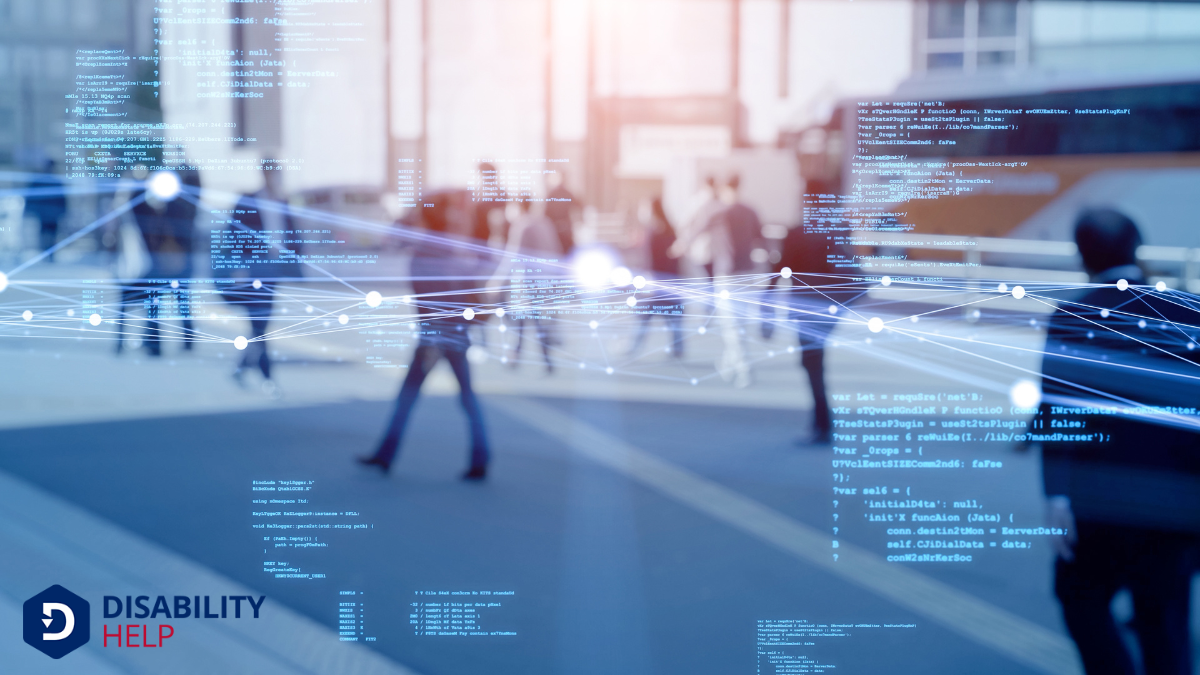When we consider how disability discriminationUnfair treatment of individuals based on their disability in areas such as employment, education, an... differs from general harassment, we notice distinct focuses and motivations. Disability discrimination specifically targets individuals based on their disabilities, often stemming from biases about their capabilities. In contrast, general harassment involves unwelcome conduct due to various characteristics like race or gender. This distinction impacts how both are addressed legally and socially. How do these differences shape the experiences of those affected and the strategies for prevention?
Key Takeaways
- Disability discrimination focuses on unfair treatment due to an individual's disability, while general harassment targets various characteristics like race or gender.
- Disability discrimination often involves accessibilityThe design of products, devices, services, or environments to be usable by people with disabilities.... barriers, whereas general harassment involves creating an intimidating or offensive environment.
- Legal frameworks like the ADA specifically address disability discrimination, providing protections and accommodationAdjustments or modifications provided to individuals with disabilities to ensure equal access and pa... requirements.
- General harassment typically involves repeated unwelcome actions, while disability discrimination can occur in singular acts of unfair treatment.
- Addressing disability discrimination requires promoting accessibility and equal opportunities, unlike the broader scope of general harassment.
Understanding Disability Discrimination
Disability discrimination happens when individuals with disabilities are treated unfairly or less favorably because of their disability. We often encounter situations where people with disabilities face barriers that others don’t. These barriers can be physical, like inaccessible buildings, or attitudinal, such as assumptions about capabilities.
It's essential to recognize that these unfair treatments aren't just everyday challenges but are rooted in bias. By understanding this discrimination, we can start to dismantle these barriers.
We must ask ourselves how we can contribute to a more inclusive environment. This involves advocating for equal opportunities and supporting policies that protect individuals with disabilities.
Together, we can create a world where everyone, regardless of ability, is treated with respect and dignity. Let’s commit to understanding and addressing this issue.
Defining General Harassment

While we might think of harassment as a broad term, it’s crucial to understand its specific implications and impact. Harassment involves unwelcome conduct that creates an intimidating, hostile, or offensive environment. It can occur in various settings, from workplaces to social situations, and often targets individuals based on characteristics like race, gender, or religion.
Here are some key aspects to reflect on:
- Unwanted Behavior: Any behavior that's uninvited and causes discomfort or harm.
- Repetitive Actions: Harassment often involves a pattern or series of actions, not just a single incident.
- Impact on Environment: It affects the victim's ability to feel safe and respected in their environment.
Understanding these elements helps us recognize and address harassment effectively, ensuring healthier interactions in our communities.
Legal Frameworks and Protections
Let's explore how legal frameworks protect individuals with disabilities from discrimination and harassment.
We've specific laws like the Americans with Disabilities Act that outline rights and workplace accommodationModifications or adjustments made to a job or work environment to enable individuals with disabiliti... requirements.
Disability-Specific Legal Protections
When traversing the complexities of disability-specific legal protections, it’s crucial to understand the framework designed to safeguard the rights of individuals with disabilities.
This framework guarantees that everyone can participate fully in society without facing unfair treatment or barriers.
Let's explore some key components:
- Reasonable AccommodationsModifications or adjustments in healthcare settings to support patients with disabilities.: Employers and service providers must make adjustments that enable individuals with disabilities to perform their roles or access services effectively.
- Accessibility Standards: Buildings, transportation, and digital platforms must meet specific criteria to guarantee they're usable by individuals with disabilities.
- Inclusive EducationEducational practices that integrate students with disabilities into general education classrooms, s...: Schools are required to provide support and resources, facilitating an equitable learning environment for students with disabilities.
Anti-Discrimination Laws Overview
Despite the progress we've made, understanding the intricate landscape of anti-discrimination laws remains essential to effectively safeguard the rights of those with disabilities.
Laws like the Americans with Disabilities Act (ADA)A U.S. law that prohibits discrimination against individuals with disabilities in all areas of publi... and the Rehabilitation Act of 1973A U.S. law that prohibits discrimination based on disability in federal programs and services, inclu... provide a critical framework. These laws protect individuals from discrimination in various sectors, including employment, public services, and education. They guarantee that people with disabilities have equal opportunities and aren't unfairly treated based on their condition.
Our legal system also mandates that facilities and services are accessible to everyone, promoting inclusivity.
Workplace Accommodation Requirements
While maneuvering through the complexities of workplace accommodation requirements, it's crucial to grasp the legal frameworks and protections in place.
We've a collective responsibility to guarantee that employees with disabilities receive the necessary support to thrive. Legal frameworks, like the Americans with Disabilities Act (ADA), mandate reasonable accommodations, promoting an inclusive work environment.
Let's break down what this entails:
- Reasonable Accommodations: Employers must modify the job or work environment to assist employees with disabilities unless it causes undue hardshipA legal concept that refers to significant difficulty or expense imposed on an employer or service p....
- Interactive Process: Both employer and employee should engage in open dialogue to determine appropriate accommodations.
- Protection Against Retaliation: Employees are protected from retaliation when requesting accommodations.
Understanding these elements helps us create a supportive workplace for everyone.
Examples of Disability Discrimination
How often do we recognize the subtle but pervasive instances of disability discrimination in our everyday lives? It might be more frequent than we think.
Imagine a scenario where a qualified applicant is overlooked for a job simply because they use a wheelchair. In another instance, a student with a learning disabilityA disorder in one or more of the basic processes involved in understanding or using language, spoken... mightn't receive necessary accommodations, putting them at an unfair disadvantage.
We might also witness a lack of accessible facilities in public spaces, effectively excluding those with mobility challenges. Consider a workplace that refuses to provide screen readers for visually impaired employees.
These examples highlight how discrimination can manifest in varied forms, often unnoticed. Recognizing these instances is essential for fostering inclusivity and ensuring equal opportunities for everyone.
Impact on Individuals and Society

When we consider the impact of disability discrimination on individuals and society, it's clear that the consequences are profound and far-reaching. We witness how discrimination affects personal well-being and community dynamics.
Individuals facing such discrimination often experience:
- Emotional distress, leading to anxiety, depressionA mental health condition marked by persistent feelings of sadness and loss of interest., and diminished self-esteem.
- Economic challenges, as barriers in the workplace, limit job opportunities and financial security.
- Social isolationThe condition of being separated from other individuals, often experienced by people with disabiliti..., stemming from exclusion in various social settings.
These impacts don't just touch those directly involved; they ripple through society, leading to a less inclusive and equitable community.
As we reflect on these issues, we recognize that everyone loses when discrimination persists. Together, we can push for a society where everyone feels valued and supported, regardless of ability.
Strategies for Prevention and Inclusivity
Let's focus on how we can prevent disability discrimination and harassment by implementing inclusive policies and fostering supportive environments.
By actively promoting inclusivity, we guarantee everyone feels valued and respected.
Together, we can create spaces where all individuals thrive and contribute their best.
Implement Inclusive Policies
To effectively combat disability discrimination and harassment in the workplace, we must implement inclusive policies that promote diversityThe inclusion of individuals from a wide range of backgrounds, including people with disabilities. and respect. By doing so, we guarantee everyone feels valued and supported.
Here are a few strategies to guide us:
- Develop clear policies: Clearly outline what constitutes discrimination and harassment, providing examples specific to disabilities, guaranteeing everyone understands the boundaries.
- Provide regular training: Offer mandatory training sessions on disability awareness and inclusionThe practice of creating environments in which any individual or group can be and feel welcomed, res..., helping foster understanding and empathyThe ability to understand and share the feelings of another, particularly important in understanding... among all employees.
- Encourage open communication: Create channels for employees to voice concerns or report discrimination without fear of retaliation.
These steps not only help prevent discrimination but also build a culture where everyone’s contributions are recognized and appreciated.
Let's work together to create an environment that’s truly inclusive.
Foster Supportive Environments
Creating a supportive environment is essential for preventing disability discrimination and promoting inclusivity. We can start by fostering open communication, encouraging everyone to share their needs and concerns. By doing so, we create a culture where individuals feel valued and understood.
It's important to educate ourselves and others about different disabilities, which helps us build empathy and dispel myths. Let's also focus on accessibility, ensuring our spaces are welcoming and accommodating for all. This includes providing necessary tools and resources that enable everyone to thrive.
Additionally, we should celebrate diversity by recognizing and appreciating the unique contributions of each individual. Together, we can create a workplace where everyone feels respected and empowered to participate fully, helping us all succeed.
Frequently Asked Questions
What Are Common Misconceptions About Disability Discrimination?
We often think disability discrimination’s just like other biases, but it’s not. People assume accommodations are special perks. They might believe equal treatment means fairness, overlooking that true equality accounts for individual needs. Let’s challenge these misconceptions together.
How Does Intersectionality Affect Experiences of Disability Discrimination?
We comprehend that intersectionalityThe theory that various forms of social stratification, such as race, gender, and disability, do not... shapes disability discrimination by adding layers of complexity. It’s essential we recognize how race, gender, and socioeconomic status intersect with disability to create unique barriers, influencing each person’s experience differently. Let's explore this together.
What Role Do Bystanders Play in Addressing Disability Discrimination?
As bystanders, we've got a powerful role in addressing disability discrimination. By speaking up, supporting the person affected, and reporting incidents, we can foster an inclusive environment and challenge discriminatory behaviors. Let's act together for change.
How Can Technology Help Combat Disability Discrimination?
We can leverage technology to combat disability discrimination by using accessibility tools, raising awareness through social media, and implementing inclusive designDesign that considers the needs of the widest range of users, including people with disabilities, fr.... Let's guarantee digital spaces are welcoming and equitable for everyone, fostering understanding and inclusivity.
What Resources Are Available for Victims of Disability Discrimination?
We recognize you're seeking support. Resources like the EEOC, ADA National Network, and local advocacyThe act of arguing in favor of, supporting, or defending the rights and interests of individuals or ... groups can help. They offer guidance, legal assistance, and community support for those facing disability discrimination. You're not alone; reach out.
Conclusion
In summary, we’ve explored how disability discrimination is distinct from general harassment, focusing on its specific impact on individuals with disabilities. It's essential for all of us to recognize these differences to foster a more inclusive society. By understanding the legal frameworks, identifying examples, and considering the societal impact, we can work together to prevent discrimination and promote inclusivity. Let’s commit to creating environments where everyone feels valued, respected, and empowered.






